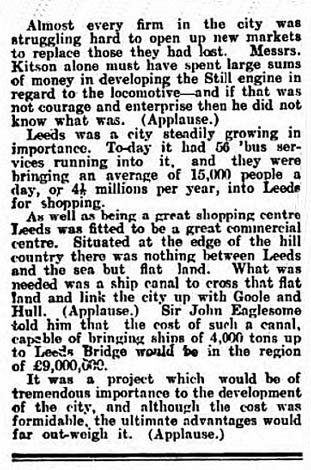Leeds & Liverpool Canal
FROM LIVERPOOL TO LEEDS
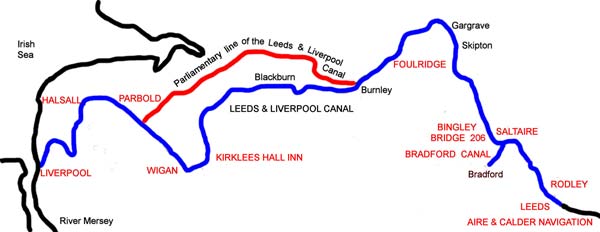
LIVERPOOL
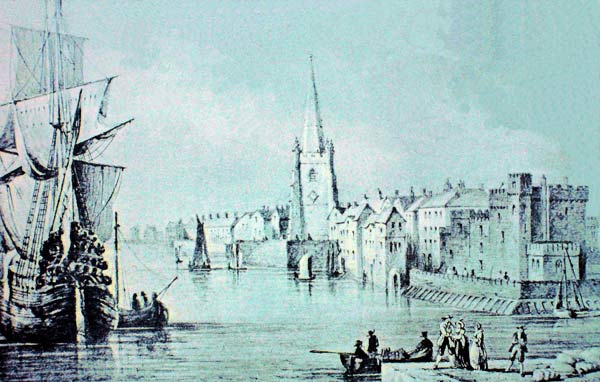

Dr John Aikin described Liverpool at the time the canal was proposed in his graphic account, A Description of the Country from Thirty to Forty Miles Round Manchester published in 1795.
About three miles within the mouth of the River Liverpool is situated ... The first existence of a town in this spot is traced ... to the time of William the Conqueror, when Roger of Poitiers ... built a castle here ... in 1565 there were in Liverpool only 138 householders and cottagers, and all the shipping of the place consisted of ten barks ... and two boats navigated by seventy-five men ... Prom this period to that of the civil wars, the increase of its population and trade could not be very considerable ...
In 1710, the increase of trade had suggested the necessity of a dock and an act passed for ... empowering the town to construct one ... About this period, the number of the ships belonging to the port was eighty-four... The port was, however, frequented by above three times that number of ships belonging to other places. As the Irish trade was the original branch of the Liverpool commerce, so it continued to be the principal one ... The ... situation of the Isle of Man ... caused the greatest part of its trade also to centre in this port. The import ... of iron, timber, hemp, flax and naval stores, from the northern countries of Europe, must have been an early branch of business at a thriving port ... And as opulence and elegance of living gained ground ... wine, fruits, and other articles from the south of Europe ... as a small vessel is said to have sailed from Africa in the year 1709, it may be presumed that some portion of the direct traffic to the West Indies existed as early as that period.
The number of inhabitants in 1720 is computed at 10,446 ... In the same year, an act passed for making navigable the rivers Mersey and Irwell as far as Manchester, the first of those schemes for internal navigation in Lancashire, which have since multiplied ... to the benefit of the whole country, and especially of Liverpool ... 1720 ... gave rise to a still more important ... water-communication, which was that by means of the river Weaver, with Northwich and Winsford ...
The internal water-communications of Liverpool were increased by the Sankey canal, in 1755 ... It afforded from the first a new supply of coals to Liverpool ... By 1760, the population of Liverpool had reached ... 25,787 souls, and the tonnage of the shipping belonging to its port was above four times that of ...1709 ... The Duke of Bridgewater’s canals had by this time begun to operate in adding to the business of Liverpool. The Grand Trunk communication between the Trent and the Mersey, so important to the trade of both rivers, was carrying on with vigour.

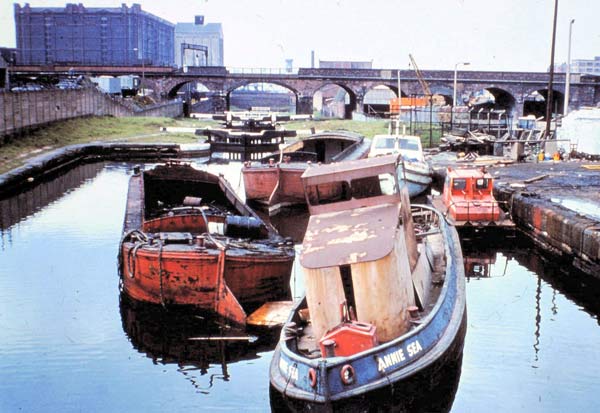

HALSALL


On 7 November 1770 the Hon Charles Mordaunt of Halsall Hall removed the first sod in the cutting of the canal. A sculpture by Thompson Dagnall of the Halsall Navvy today commemorates the event. In 1907 William Farrer and J Brownbill recorded a description in the .‘Townships: Halsall’, in A History of the County of Lancaster, Volume 3.
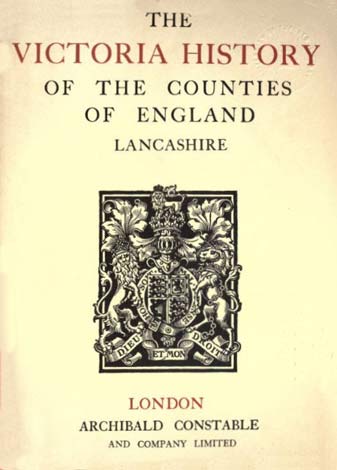
The scattered houses of the village stand on the higher ground near the church. To the south-east is the hamlet of Bangors Green; Four Lane Ends is to the north-east. From near the church an extensive and comprehensive view of the surrounding county is obtained. The northern arm of the Downholland Brook rises in and drains part of the district, running eventually into the River Alt, which is the natural receptacle for all the streams and ditches hereabouts. The Leeds and Liverpool Canal crosses the southeastern portion of the township, with the usual accompaniment of sett-laid roads and untidy wharfs. Renacres Hall and La Mancha are on the north.The township is governed by a parish council.
Parbold
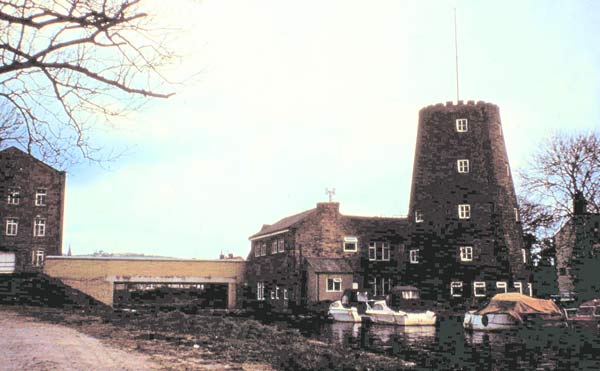
Parbold is a small village in West Lancashire. During the eighteenth and nineteenth centuries coal was mined and sandstone quarried in the area. Its economic development took place after 1742 when the river Douglas was made navigable and in the 1770s with the building of the Leeds & Liverpool Canal. This notice of a forthcoming auction in the Manchester Mercury of May 1791 makes the point.

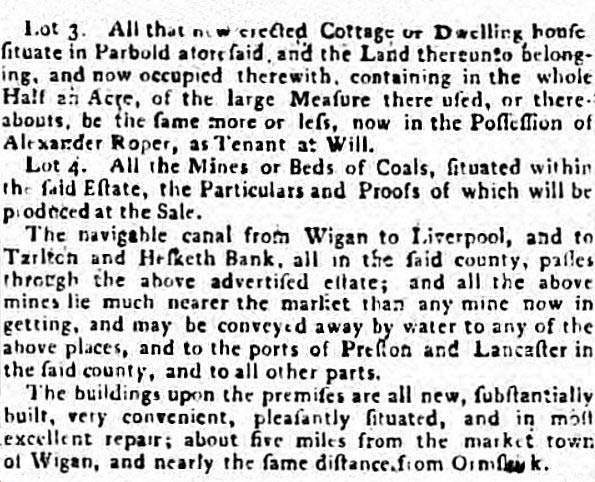
Wigan
Wigan stands on the river Douglas. During the eighteenth century it became a centre for coal mining and textile production. The Douglas Navigation was authorised in 1720 and finally opened in 1742. The opening of the Leeds & Liverpool Canal here in 1774 and the Lancaster Canal in 1794 made a major contribution to the local economy.
Although the canal to Wigan, when it opened in 1774, was originally intended to be a spur to the main canal, when work recommenced in 1790, it became the primary route and Wigan became the focal point for transporting coal from the Lancashire’s pits to Liverpool and Leeds.

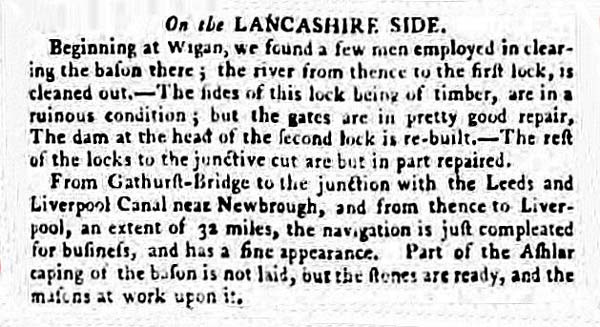
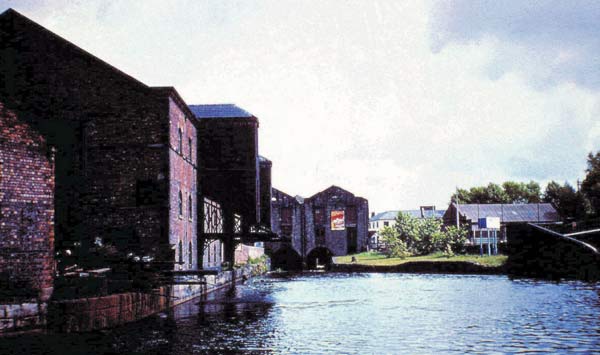
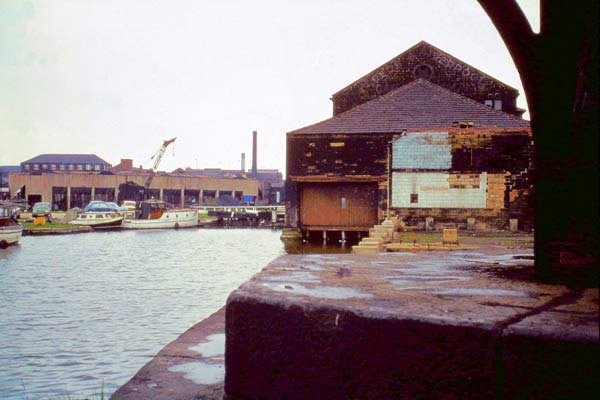
KIRKLEES HALL INN

This is Wigan Top Lock adjacent to the Kirkless Hall Inn. It ends the 200 feet ascent of the canal from Wigan and the Leigh Branch. It is the last of the 21 lock Wigan Flight.
FOULRIDGE
A major engineering achievement was carried out by Robert Whitworth when he constructed the 1,649 yards long tunnel at Foulridge. It was opened on the Tuesday 3 May 1796. The horses were taken over the top whilst the bargees legged the barge through.

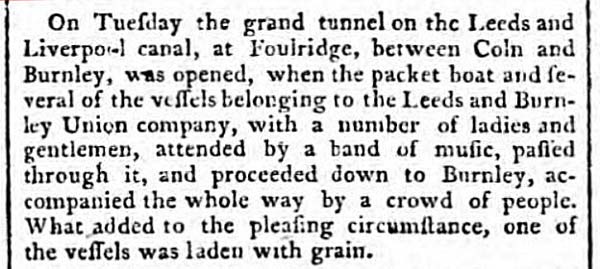
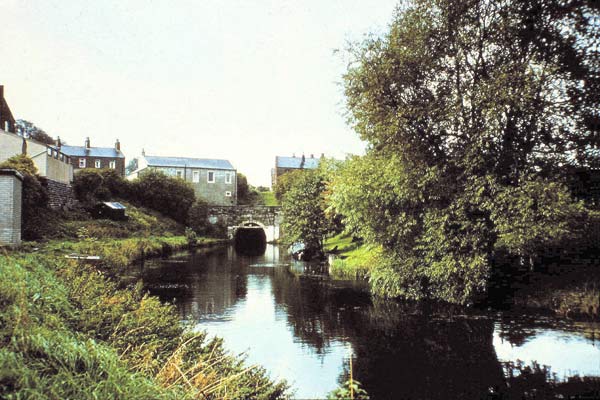
Bingley
BINGLEY FIVE RISE LOCKS
Bingley Five Rise Locks boasts the steepest flight in the United Kingdom. The staircase rises 59 ft 2 in (18.03 m) over a distance of 320 ft (98 m).
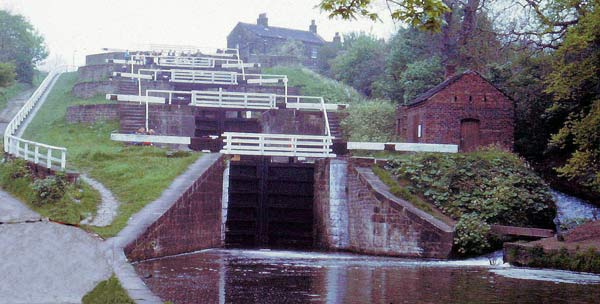

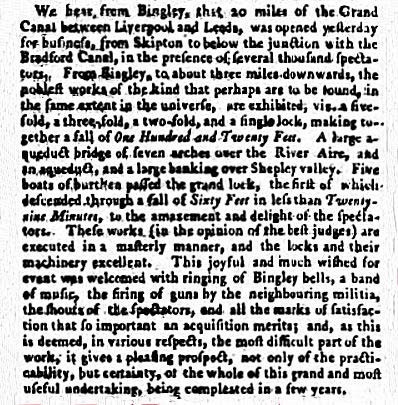
BRIDGE 206
There were 226 bridges in all over the canal. Most were stone or swing bridges and are numbered starting from Liverpool. When additional bridges were erected a letter was added to the number.
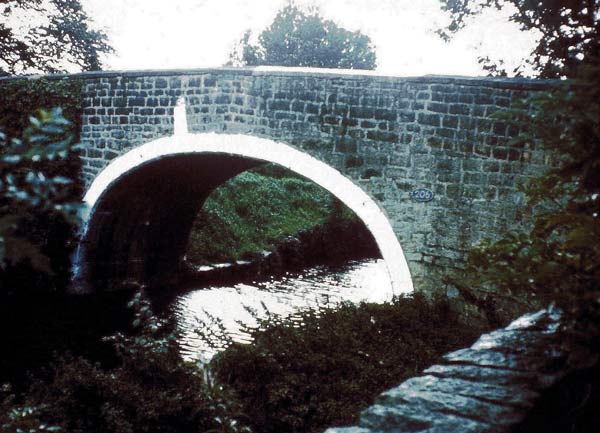
Regular adverts appeared in the press for bridge builders.

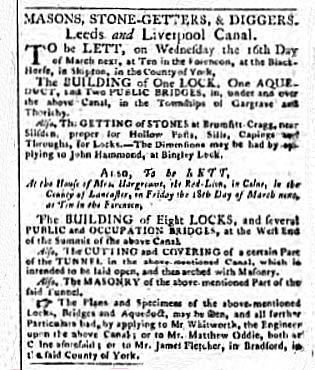
SALTAIRE
Titus Salt, a Bradford textile manufacturer, decided to establish his model village on the outskirts of Bradford in the Aire valley beside the Leeds & Liverpool Canal and the new railway. He provided homes for his workers, and the new development boasted a school, a hospital, a library, shops, bathhouses, a concert hall, a church and for recreation a park and a billiard room.
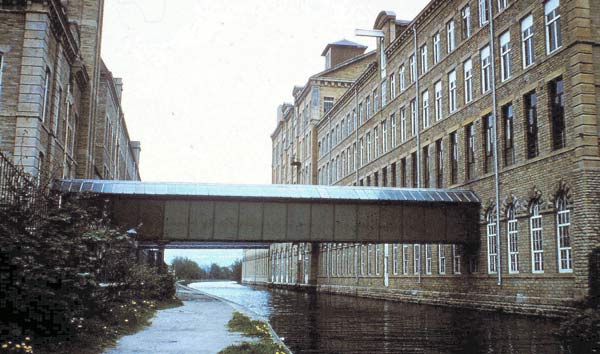
William White gave a contemporary account of the development in his Directory for 1853.
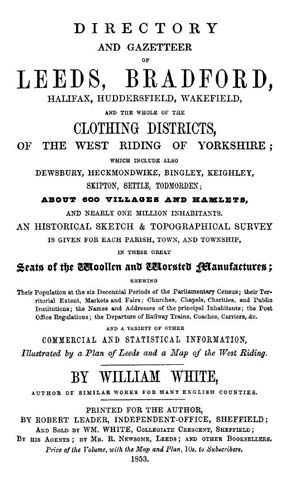
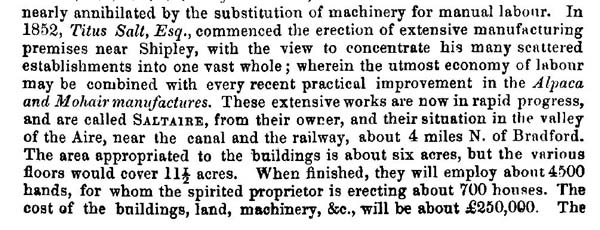
BRADFORD

It was always envisaged that when the canal was built a link with Bradford would be part of it. Parliament authorised the building the Leeds & Liverpool Canal in 1770 and a second bill was introduced and passed in 1771 to construct a canal from Bradford. It would link with the Leeds & Liverpool Canal at Shipley and be 3.5 miles (5.6 km) long and drop 86 feet through ten locks. It opened in March 1774.

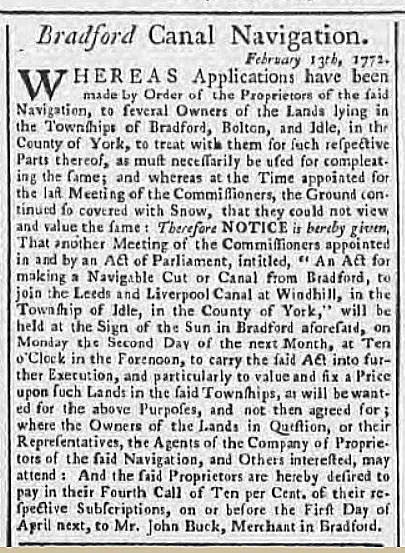
Naturally difficulties were encountered in its building including thefts.

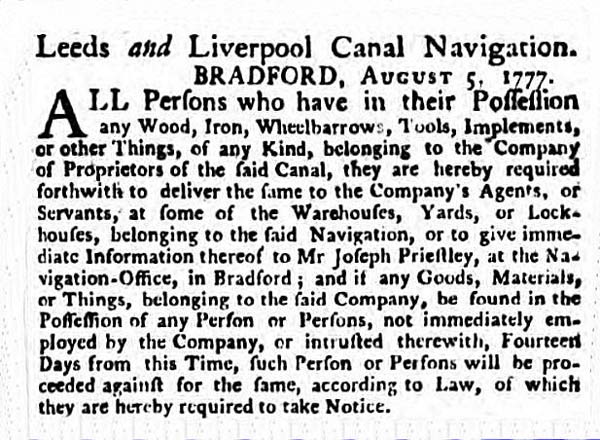
The running of the canal became increasingly difficult and the company closed it in 1867.
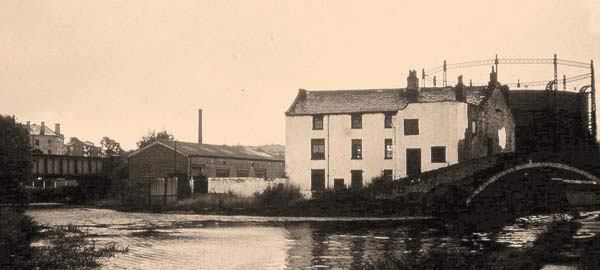
Local businessmen re-opened the canal in 1872 and it was officially closed in 1922.
RODLEY
Rodley was a small settlement to the north-west of Leeds near Bramley. Its economic growth dates from the time of the building of the canal through it. From then on stone built industrial buildings and mills lined its banks. Among these was, what became the internationally famous, Thomas Smith & Sons who manufactured cranes at their Old Foundry on a narrow strip of land between Town Street, Rodley and the Leeds & Liverpool Canal. Apart from its economic contribution to the people of Rodley, the canal proved popular with local children who swam in it. Old Walt Smith recalled in the 1970s that as a boy in 1900 when a barge carrying a load of sugar capsized the water tasted sweet!
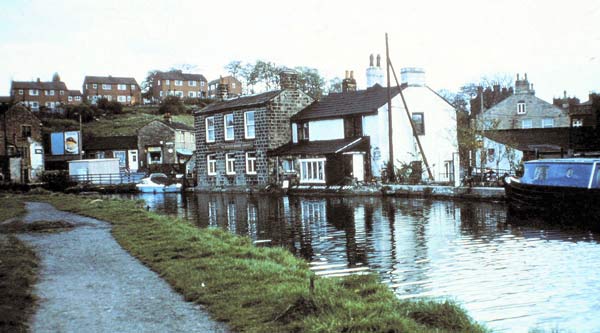
The Rodley Barge, originally called the Three Horseshoes, offered a smithy and stabling facilities from the late eighteenth century/ early nineteenth century to bargees.
LEEDS
The Aire & Calder Navigation provided an outlet for the manufacturers of the West Riding to Hull and the Continent. It was obvious when the canal to Liverpool was being considered it was essential it came to Leeds and the junction with the Aire & Calder.
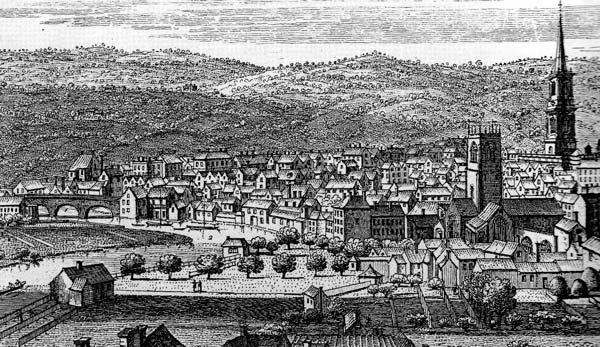
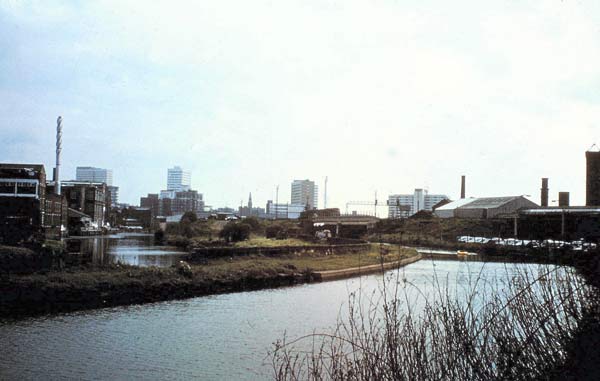
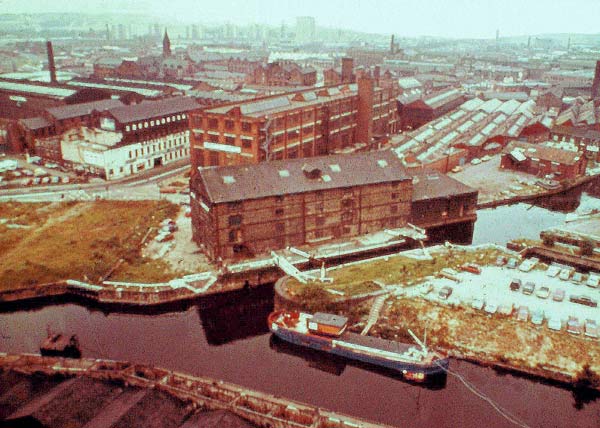
Regular services were provided to both east and west coasts.
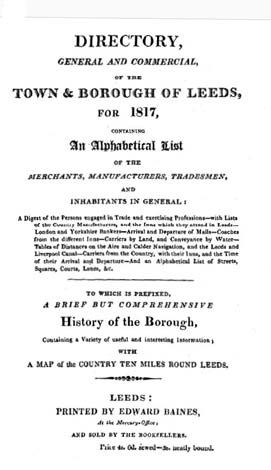
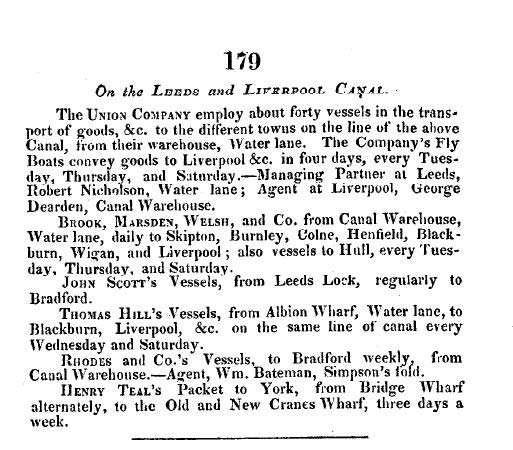
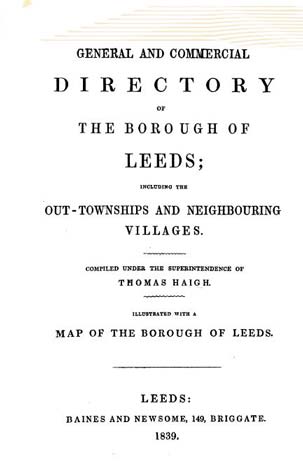
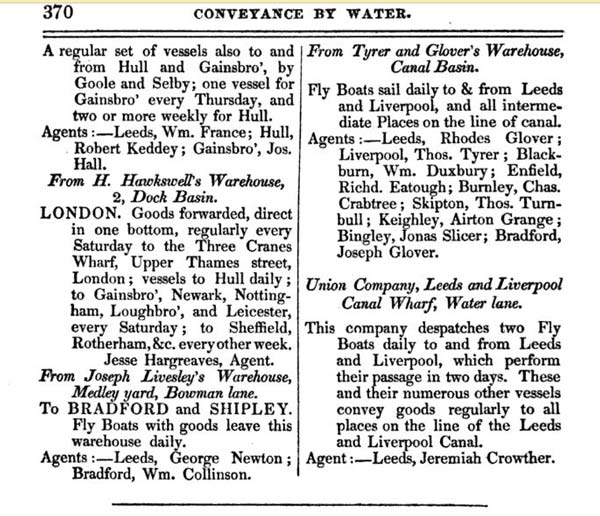
Sir George Head in 1835 recorded his comments on the canal during his visit to Leeds.
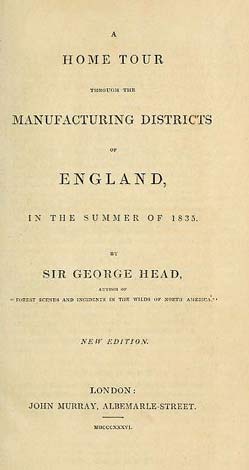
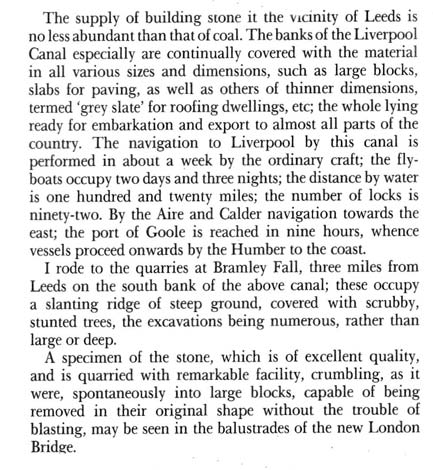
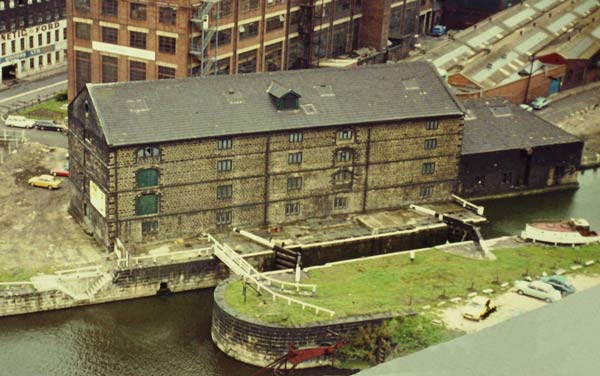


AIRE & CALDER NAVIGATION
The Bill permitting the opening of the Aire & Calder Navigation received the Royal Assent in 1699. Work commenced in November 1700 and the navigation began operating in 1704.
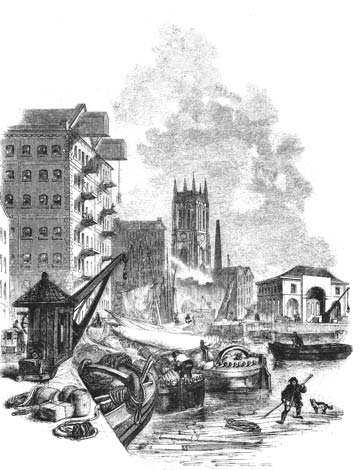
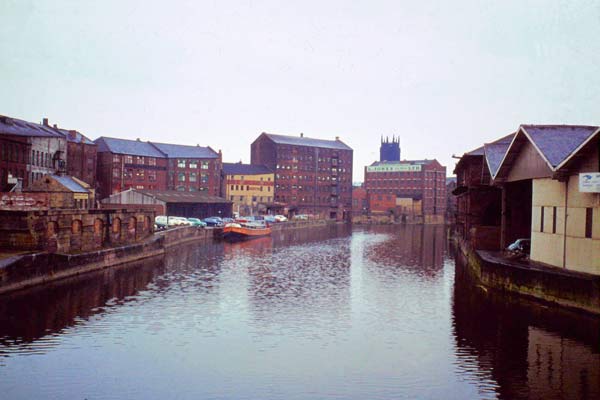
At a meeting of the Yorkshire Association of Corporate Members and Students of the Institution of Civil Engineers at the Great Northern Hotel, Leeds on 31 January 1929, Alderman Hugh Lupton spoke regrading the building of such a canal.

